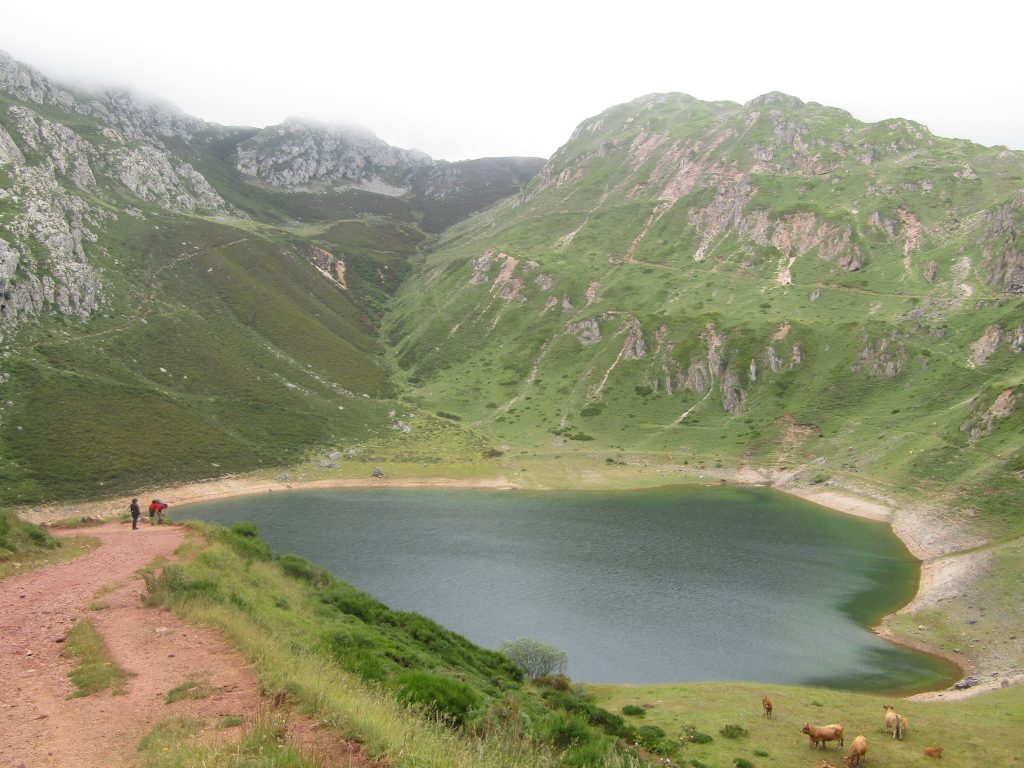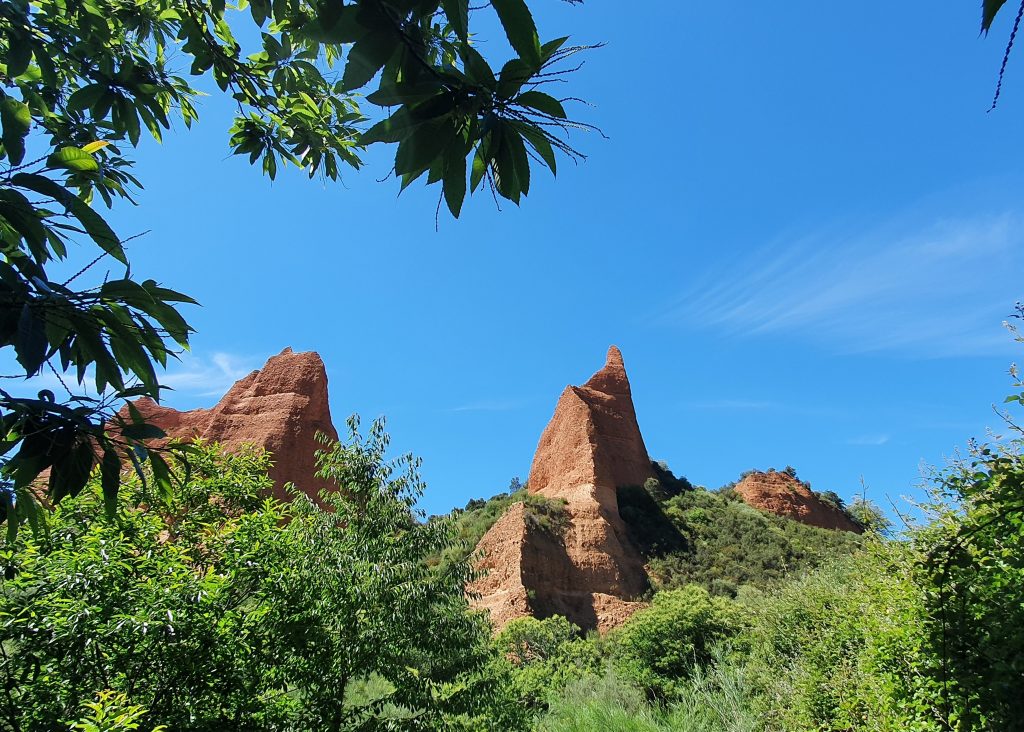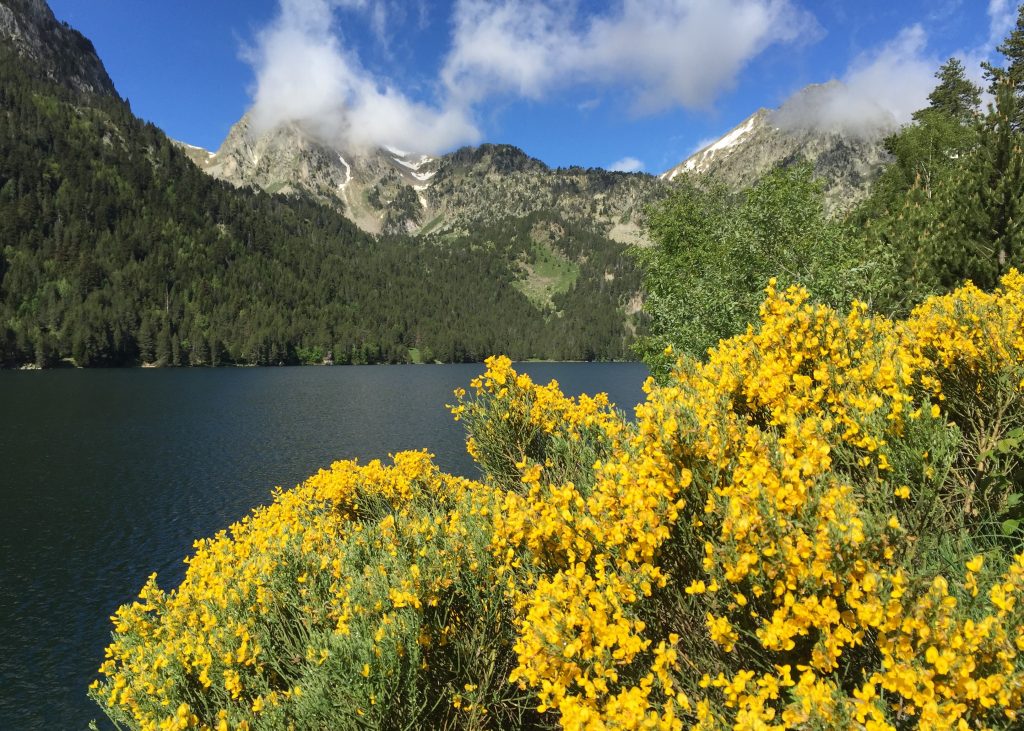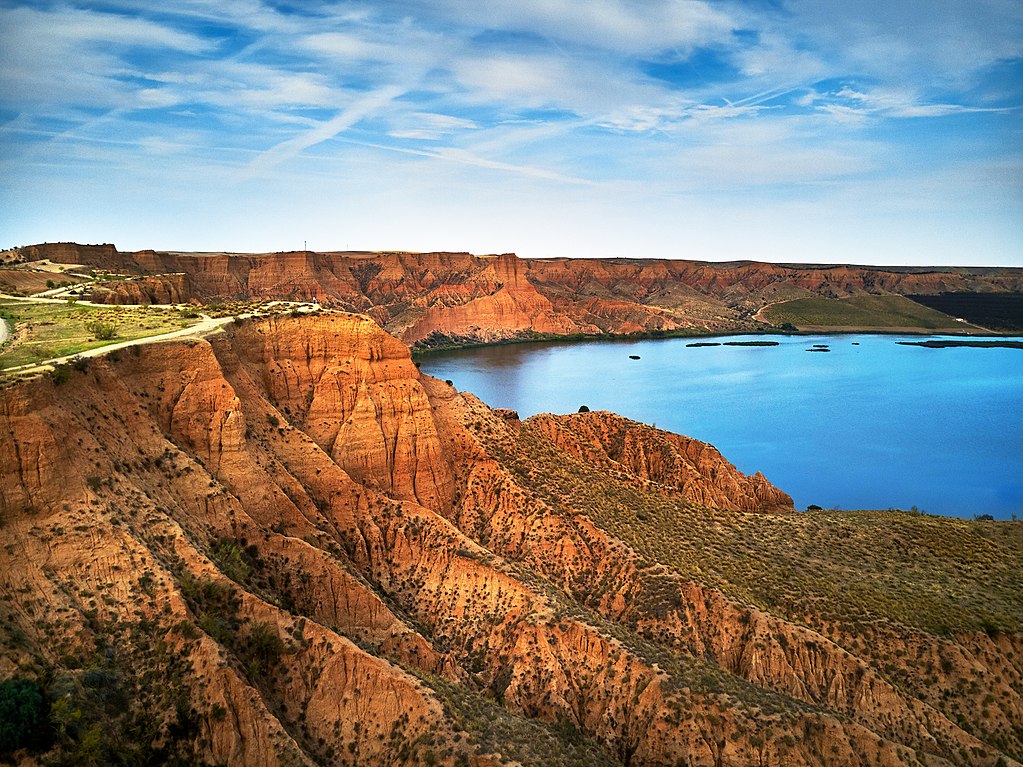Spain is rich in special landscapes. The Spanish professional association for geologists selected their top 20 Spanish landscapes. From dramatic rock formations and deep fissures to impressive volcanoes, towering cliffs and interesting dinosaur tracks.
NORTHERN SPAIN
Geopark Costa Vasca – Basque Country
Northern Spain is richly endowed with surprising landscapes. Along the coast in the Basque Country you will find the geopark of the Basque Coast (Costa Vasca). A geopark is a place of territory where you can experience the history of the earth, for example because the creation of landscapes is clearly visible.
The Geoparque de la Costa Vasca has even been recognized by UNESCO as a global geopark to admire 66 million years of history of the formation of the earth, from about 112 million to about 50 million years ago. The place is unique because of the many layers of so-called flysch rock. Flysch is sedimentary rock that is deposited in a layer, with different composition per layer. This not only provides a picture of history, but also a fantastic coastal landscape.
Huellas de Dinosaurio – La Rioja
The geologists’ list also includes the future Huellas de Dinosaurio (Dinois tracks) geopark in La Rioja. Here you will find more than 11,000 dinosaur tracks, making the park the most important fossil site in Europe.
Cabo Menor – Cantabria
Further west on the coast, in Cantabria is the Cabo Menor and the mouth of the River Pas at Liencres. Here you will find a varied landscape with cliffs, special rock formations in the sea, friendly bays and beaches. Especially the Playa de la Arnía is very beautiful and offers a view of the rocks that rise up from the sea like straight lines.
Fuente Dé – Asturia
In the interior of Cantabria is the Fuente Dé, a semicircular valley carved by glaciers at the foot of the Picos de Europa. From Fuente Dé you can take a cable car to the heart of this mountain range, where you have a fantastic view of the mountain peaks.
Bufones de Pría – Asturia
On the Costa Verde in Asturias, the following special coastal landscape, formed in an interplay of limestone and the sea. The Litoral del Oriente is a jagged landscape with high limestone cliffs in which the sea has formed. Above the caves are holes in the bottom, bufones. At high tide, the water hits the coast with force and shoots up through those holes like geysers. At the beach of Guadamía are the Bufones de Pría where you can best admire this phenomenon.
Glacier Lakes Somiedo – Asturia

Further inland in Asturias, glaciers in the Somiedo nature reserve have originally left deep traces in the landscape, such as at the lakes Lagos de Saliencia and Lago del Valle. This is an ideal place to look for fossils and minerals.
Las Médulas – León

In the province of León you will find the Roman mines of Las Médulas. Large pieces of mountain were excavated here to extract gold for the Roman Empire. the Romans used hydropower from water that was brought from the mountains through canals up to 100 km long. The mine mining operations have created a spectacular landscape of red peaks, which are wonderful for hiking.
Geopark of Courel
In Lugo (Galicia), in the Geopark of Courel you can experience the geological processes that formed the basis of the formation of Galicia.
Playa de las Catedrales – Galicia
On the coast in Galicia is the beautiful beach of Playa de las Catedrales, where rocks form meter high natural arches, making it seem like you are walking through a cathedral. The combination of fantastic rock formations, caves, sea and beach makes this place a real attraction. The Playa de las Catedrales can only be visited at low tide.
EASTERN SPAIN
Volcanic Area of Garrotxa – Girona
On the ground of Girona you will find one of the most interesting old volcanic areas and the most important volcanic landscape in the Iberian area: the Natural Park of the Volcanic Area of Garrotxa. This unique volcanic landscape contains 40 dead volcanoes and more than 20 basalt lava flows.
Geopark Orígenes – Lleida

In the north of Catalonia in the province of Lleida is the Geopark Orígens in the Pyrenees, you can walk along an old railway (Carrilet de Estany Gento) at more than 2,100 meters in a landscape formed by glaciers. This glacial valley is part of the Aigües Tortes i Estany de Sant Maurici National Park.
Montaña de Sal – Barcelona
In the province of Barcelona is the former salt mine Montaña de Cardona. Potassium salt is mined here from about 11,000 BC. On the site of the old Mina Nieves mine, in use from 1929 to 1990, you can now visit the Parque Cultural de la Montaña de Sal, which offers guided tours of the salt mines and a salt museum. The salt mountain that is visible forms the tip of a salt pillar almost 2 km deep and is one of the landmarks in this park.
Caves of San José – Valencia
In Valencia you can also dive into the underground, but here too there are caves formed by nature. North of the city of Valencia in Val l d’Uixó you will find the limestone caves of San José with the longest navigable underground river in Europe.
Capa Negra de Agost – Alicante
In Alicante, the Capa Negra de Agost is on the list of geologists. The Capa Negra, literally black layer, is a dark soil layer that marks the transition from the Cretaceous to the Tertiary. About 66 million years ago, a meteorite struck the Mexican Yucatán, hitting a crater 180 km wide in the earth. This caused a huge cloud of dust, which made it dark on Earth for a long time. It was then many plants and animals, including the dinosaurs, became extinct. The precipitated dust has formed an outcrop that rises above the ground at Agost.
CENTRAL SPAIN
Mount Peñalara and La Pedriza – Madrid
In the Madrid region you can visit Mount Peñalara and La Pedriza. In the nature reserve of Mount Peñalara are different shapes and traces that glaciers have formed in the landscape. La Pedriza is an area of granitic rocks that have taken on exceptional shapes through different phases of geological development. They have been given names such as el Yelmo (the helmet), el Pájaro (the bird), la Foca (the seal), el Camello (the camel) and el Elefantito (the elephant). La Pedriza is the main destination for climbers in the Madrid region.
Barrancas de Burujón – Toledo

Near Toledo you will find the Barrancas de Burujón, a landscape with on the one side the reservoir of Castrejón with many water birds, and on the other side the steep and pointed rocks of red clayey rocks, reminiscent of the Gran Canyon. Especially in the light of the setting sun the rocks turn a beautiful red.
Volcano Cerro Gordo – Ciudad Real
Also in Castile-La Mancha is the volcano Cerro Gordo, southeast of Ciudad Real, where you can also walk through the crater when visiting. The volcano is part of the Campo de Calatrava. In this area, volcanic activity from different geological periods, from over 8 million years ago to the most recent geological epoch, has formed many different types and shapes of volcanoes, with an extraordinary amount of crater lakes.
Arribes de Duero – Salamanca
On the border with Portugal, the River Duero has carved the longest and deepest canyons in Spain into the landscape. The ravine of the Arribes del Duero is a special landscape of granite rocks, with impressive waterfalls. It makes an excellent habitat for many different animal species.
THE CANARY ISLANDS
Volcano mountain La Arena – Fuerteventura
In the Canary Islands, near the village of La Oliva, is the volcano mountain La Arena. The youngest on Fuerteventura, this slag volcano is about 10,000 years old. These types of volcanoes consist of small and larger pieces of lava which solidified and deposited on the slopes. You will also find fossilized lava flows in the Malpaís de La Arena. Malpaís means bad soil and the lava here has also formed a very rough, stony surface, on which it is difficult to walk.
Nature reserve of Teno – Tenerife
On Tenerife, the nature reserve of Teno near Buenavista offers not only rugged rock formations, but also caves, naturally formed pools, deep gorges and an incredible wealth of plants and animals. Erosion of the volcanic mountains has not only created valleys like the valley of Palmar, but also a spectacular mountain landscape with enormously steep cliffs that tower up to a height of 600 meters above the sea.


